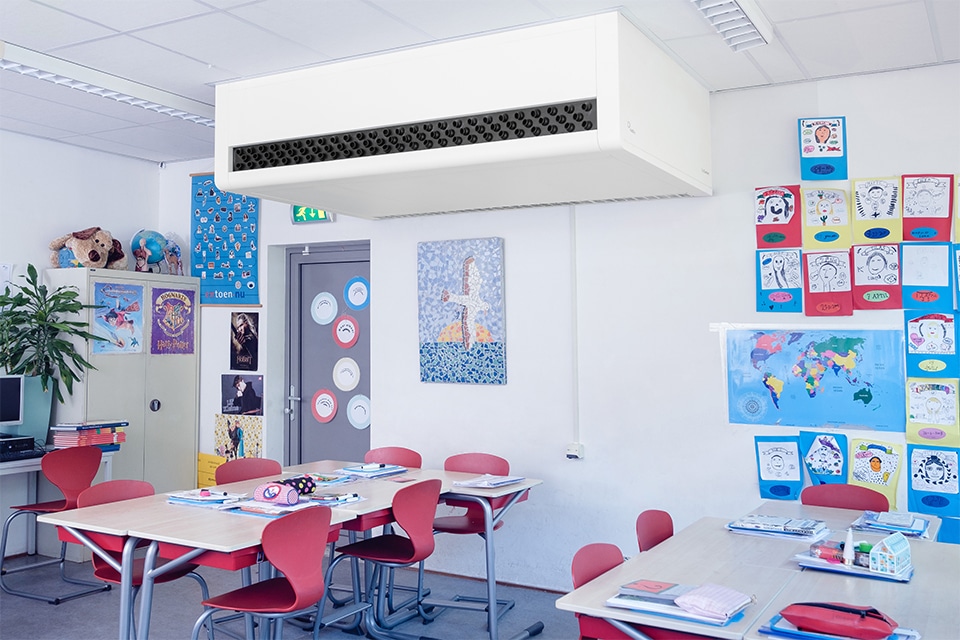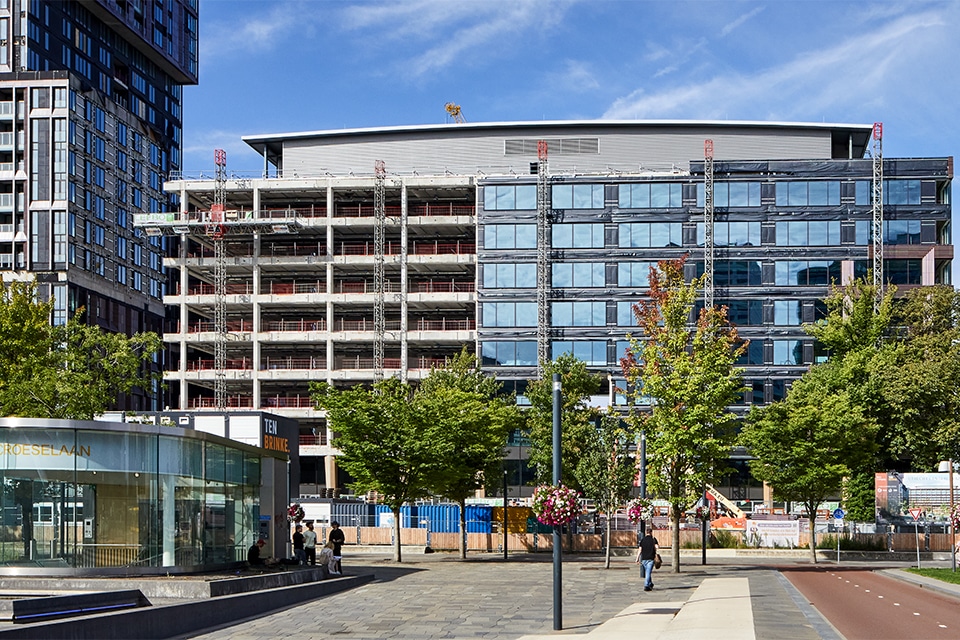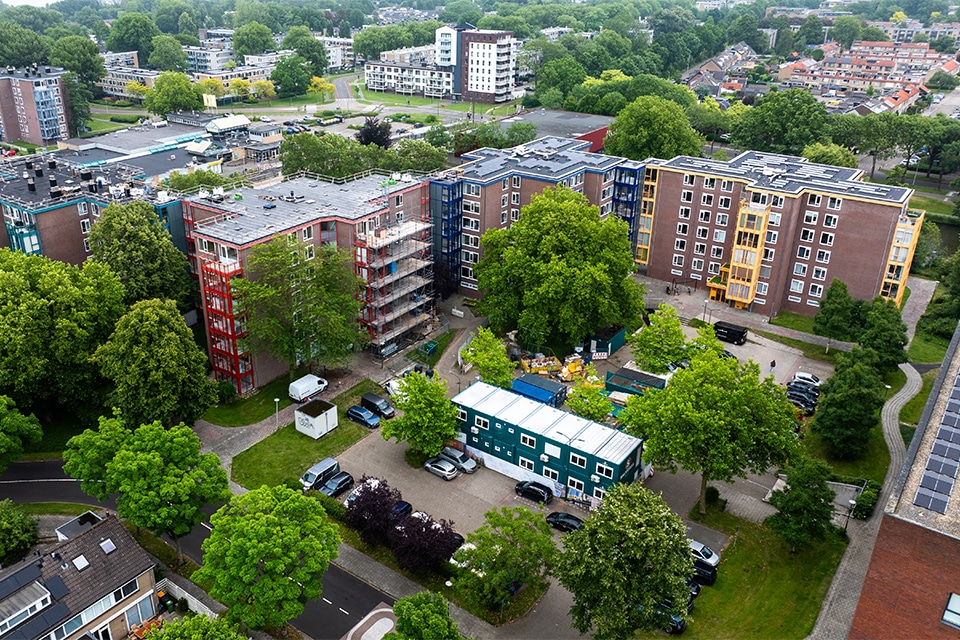
High-quality element façade for new-build tower Paasheuvelweg 17
In addition, a new residential building with 176 apartments, spread over 17 floors, will appear next to the building to emphasize the entrance to transformation area Amstel III. The new building stands out not only because of its volume, but especially because of its high-quality appearance. The aluminum element façade makes an important contribution to this.
Dura Vermeer Bouw Midden West was involved in the project from an early stage to translate De Loods Architecten's aesthetic design into a technically feasible and makeable design. "We optimized both the foundation, construction and facade finishes," says project manager Rutger van der Werf. "We also modified the design to allow a high degree of prefabrication. For example, we replaced a traditionally constructed façade of the 60-meter-high new building with a unit façade, allowing fast, dry and scaffold-free construction and ensuring high quality." What is special is that Dura Vermeer is carrying out this project entirely in-house from the VO phase, with its own (building physics) consultants, structural engineers and modelers. "To take the quality to the highest level, we immediately involved key partners. For example, specialist in aluminum profile systems WICONA contributed ideas about the right technical solution for the facade, in combination with the chosen (prefab) construction method." The choice of WICONA was a logical one, according to Van der Werf. "As an organization, we are highly committed to sustainability, also when it comes to building materials. WICONA's aluminum profiles fit this perfectly."

82% recycled end-of-lifecycle aluminum
The aluminum profiles in this project are extruded from a new and high-quality aluminum alloy and consist of at least 82% of recycled end-of-lifecycle aluminum (post-consumer scrap). "This aluminum comes from windows, doors and curtain walls of buildings that have reached the end of their useful life," says Raimond Stassen, project manager for WICONA. "Spread across two production sites in Europe, all released aluminum scrap from demolition, renovation and transformation projects is fragmented, sorted and processed/melted down to produce new and high-quality aluminum building systems. This assures architects, developers, contractors and end users of a sustainable and high-quality product and takes CO2 reduction to a new level."
Aluminum posts, rails and profiles
The main requirement for Paasheuvelweg 17 was to guard the aesthetic appearance of the façade and translate it into a manufacturable precast design, Stassen says. "The element façade responds excellently to this." Underlying the element façade are WICONA's aluminum studs, rails and profiles, which were delivered to Scheldebouw in combination with high-quality hardware products. "At Scheldebouw's factory in Middelburg, aluminum panels, glazing, any typesetting frames and acoustic boxes are added to this. Thanks to these sound boxes (loggias), residents can also open a window in the evening and at night without being hindered by the noise of the nearby A9. In this way, the element façade also perfectly matches the high noise requirements in this project."

Optimal quality, construction speed and construction safety
Scheldebouw's involvement includes working out the final façade design into a technical and execution design, based on the WICONA WICTEC 50 EL evo system. "After agreement, the element façade is assembled by us under the best factory and climate conditions into complete elements of 3.6 by 3 meters, which are transported ready-made and just-in-time by trucks to the construction site," says Rinus de Winter, project manager at Scheldebouw. "Here, the elements can be stacked quickly and without scaffolding like Lego bricks, which, in addition to quality, takes construction speed and construction safety to the very highest level." The first façade elements will be installed in mid-October.
WICONA WICTEC 50 EL evo
A unique feature of the WICTEC 50 EL evo system is that the dewatering (water management) runs through the uprights and not through the lines, Stassen says. "This allows us to guarantee a much higher waterproofing. Moreover, thanks to a special horizontal seal, which runs 100% through, we can accommodate up to 36 mm of floor settlement in our expansion joints. Specific channels allow easy installation of typesetting and cladding. This gives architects great aesthetic design freedom, without adversely affecting water management."
The former office building will be completely gutted and rebuilt by Dura Vermeer Bouw Midden West. The residential building will have a facade with ready-made HSB elements with stone strips and aluminum window frames. WICONA is also supplying the aluminum profiles for this.




